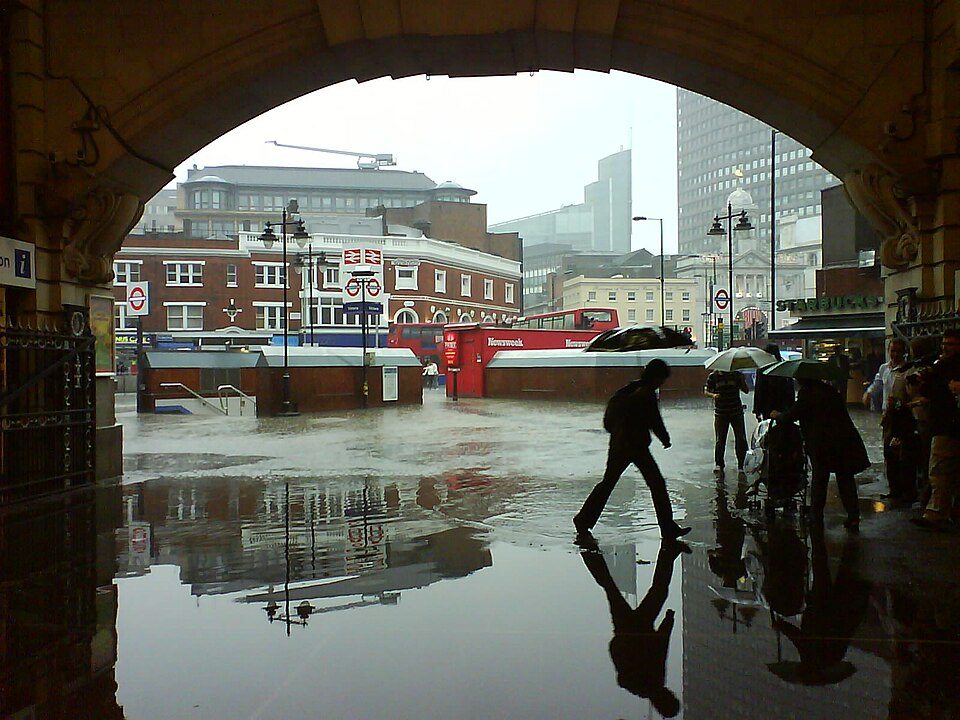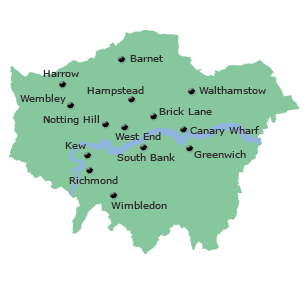
A landmark initiative to reduce the risk of flooding in London has been unveiled today, as leading public agencies collaborate on the city’s first-ever London Surface Water Strategy.
Brought together by the Flood Ready London partnership, this comprehensive strategy outlines practical and cost-effective ways to manage surface water flooding—one of the capital’s biggest climate-related risks. The plan aims to minimise disruption to residents and essential infrastructure, while also contributing to a greener, more sustainable city.
The strategy is a direct response to the devastating floods caused by intense rainfall in July 2021, which exposed the vulnerabilities of London’s drainage systems. With climate change expected to increase the frequency and intensity of such events, the newly formed London Surface Water Strategic Group was created to lead a coordinated response.
Flood Ready London includes the Environment Agency, London Councils, London Fire Brigade, Mayor of London, Thames Water, and Transport for London. Together, they have developed a strategy that uses detailed water and geographic data to inform planning, design, and local flood prevention measures.
A key feature of the plan is the creation of Surface Water Catchment Partnerships, which will pilot across ten areas over the next two years. The first two—covering Central London and Lee Valley—will trial local solutions such as installing rain gardens, removing impermeable paving, and integrating surface water allowances in new developments. These projects will compete for funding to implement the most effective flood management techniques.
So far, £1.5 million has been secured to support the rollout of Sustainable Drainage Systems (SuDS), with equal contributions from the Mayor of London, TfL, and Thames Water. Additional funding sources are actively being explored to support the long-term delivery of the strategy.
This initiative reflects a city-wide commitment to working collaboratively across boroughs, agencies, and communities to future-proof London against surface water flooding—protecting lives, livelihoods, and the built environment.
Charlie Wood, Environment Agency Director for London said:
“We are proud to be part of leading such a groundbreaking approach to reducing the impacts of urban surface water flooding in a major worldwide city like London. This partnership is the perfect example of how the Environment Agency provides strategic overview for all forms of flooding nationwide.
“Working with the mayor, boroughs and partners across London, we have produced a truly evidence-led, catchment-based approach to a complex issue.
“We must now focus our collaborative efforts on where we can all make most impact."
Cllr Kieron Williams, London Councils' Executive Member for Transport and Environment, said:
"Boroughs play a vital role in protecting our city from the very real threat of flooding. We know the devastating, long-lasting impact it can have on people's homes, businesses and livelihoods, disproportionately affecting our most vulnerable communities.
"We saw this first hand in July 2021 when two devastating storms flooded at least 2,000 properties across the capital. We are committed to ensuring Londoners are protected from the risk of flooding and the huge damage and disruption it can bring.
"Through Flood Ready London, we will work with partners to take a coordinated and collaborative approach to surface water management that helps protect our city and better prepare our communities for when flooding does occur. This will build on the extensive work boroughs already do to prevent flooding across the capital - from installing rain gardens and other sustainable drainage solutions, to working with local communities to raise awareness of flood risk."
London Fire Brigade’s Assistant Commissioner Pat Goulbourne said:
"Climate change is evolving the challenges fire and rescue services face, and it is important to have the plans in place to ensure that London is more resilient to the extreme weather we are experiencing on an increasingly regular basis.
"Heavy rain and urban flooding can cause significant damage to property and infrastructure. Being prepared will help minimise this threat and is vital to the wellbeing of this city and all Londoners."
The Mayor of London, Sadiq Khan said:
“The climate emergency remains one of the biggest threats we face. In the past we’ve seen how devastating flash flooding can be to Londoners, and extreme weather events are unfortunately becoming more common in our city.
“I’m determined to do all I can to make London more resilient to the impacts of climate change. The London Surface Water Strategy is a new pan-London approach which will see us work closely with environmental organisations to better adapt, prepare for and reduce the impact of surface water flooding.
“Together, we will work to future-proof the capital against climate change and build a better, greener London for everyone.”
Alex Nickson, Head of Partnerships and Catchment Management at Thames Water said:
“This strategy is a groundbreaking approach to dealing with the very real challenge of flooding in London. We have seen the devastating impact it can have on homes and businesses so are delighted to be a part of this cross-agency approach to dealing with the problem.
“We are seeing increasingly heavy rainfall events which overwhelm the capital’s drainage system. This strategy outlines how we can all work together to safely manage water at a surface level to protect people, property and livelihoods.
“As well as flood protection, this strategy will also help to make London a far greener city for everyone.”
Lilli Matson, Chief Safety, Health & Environment Officer at Transport for London said:
“Transport for London is committed to providing a climate-resilient transport network that is safe, reliable, inclusive and sustainable for our customers and colleagues. Any response to the future threat of flooding has to involve a wide range of agencies working in concert. We are proud to be a founding partner in the development of this first Surface Water Strategy for London. We will continue to work together with other stakeholders to share knowledge, engage with wider audiences and ensure standards pro-actively improve the capital’s resilience to climate change. This strategy proposes practical solutions to the problems we are facing now and takes a long-term view on how we deal with existential challenges decades down the line.”
Click here to read London's Surface Water Strategy.
Photo by Frankie Roberto, Wikimedia commons.




































